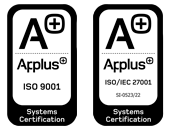How to build an MVP for an app?
Have you ever had an idea to develop an app but didn’t know if it would work in the market? Building an MVP for an app is becoming more and more common and it can be the difference between an app and the other ones. For this reason, we tell you how to build an MVP for an app.
Mobile applications are indispensable tools nowadays. That’s why hundreds of them are developed every day. Despite this, not all of them are successful as abandonment rates are very high, and strategies to retain users are increasingly complex given the range of possibilities that users have when downloading an application.
Given this situation, many times the development of an MVP for an app is carried out to have more certainty about how the launch of a mobile application is going to work.
In this post, we will tell you how to build an MVP for an app and the importance of a minimum viable product in a project.

Outsourcing is an option that is attracting more and more companies as it is a very flexible system when it comes to having a specialised team. Find out the benefits of outsourcing app development!
What is an MVP?
An MVP or minimum viable product is a simplified, simpler version of a product. It is used to test how it works in the market before launching a more complete version.
Developing an MVP allows for optimisation of time and resources by not developing a full product or solution.
An MVP is the best way to launch an idea on the market and start validating it as soon as possible. It allows us to verify whether the development of a product or service is going in the right direction to meet the needs of users or to solve a problem.
The minimum viable product is used to test on a large scale and see how users interact with a new product, service, or solution in the market.
How to build an MVP for an app?
To build an MVP for an app you need to follow a series of steps that we will discuss below. From problem identification to market research and user flow mapping. All these phases and more are the ones that mark the development of an MVP for an app.
Identify a problem and propose a solution
Before starting to build an MVP for an app, you must identify a problem that users have and propose a solution. This is one of the most important points when developing an MVP, as creating a product without a concrete objective is a waste of time.
In this phase, you should think about how the application is going to solve the proposed problem. It is also a good time to answer questions such as: what does the mobile application contribute; how many people have this problem and are looking for a solution; how will it be used; and what will its functionalities be?
Market research
Once the problem to be solved through a mobile application has been identified, the next phase is market research. Through this process it is possible to determine who is the target audience for the app, thus better understanding the public.
Market research helps to build an MVP that meets the needs of the users in an appropriate way, as well as to better understand the functionalities that the public wants.
During this phase, competitors will be analysed and questions about the target audience will be answered, such as what type of platform and operating system they tend to use, as well as some social and demographic data that will help to better understand the users, their interests, etc.
Differences between a single-page app vs a multi-page app
Create a wireframe
Once the idea has been developed and the market research has been done, we have enough data to start developing the customised solution based on the data collected from the users and the market.
A wireframe is an initial sketch of what an app will look like visually. It is a quick and simple outline that will help developers and the client to see what the app will look like visually and get an idea of how each of the screens will be defined.
It is an initial phase that allows to organise the information and create a base structure focusing on how users will navigate through the app. The wireframing phase allows the app design to focus on the user experience, taking into account how users behave in front of an application or a website by studying the possible navigation flow.
Building an MVP for an app
With all the above steps in place, the next and perhaps the most important phase is the development of the minimum viable product (MVP).
It is at this point that the foundations of the app and the core functionalities are developed using fewer resources and saving time. This does not imply that the quality of the solution is lower.
Currently, for the development of an MVP for an app, there are options of tools without code or with little code that are very useful for software professionals. This makes it possible to have the solution in less time while maintaining the agreed quality and functionalities.
When creating an MVP, design, usability, navigation flow, accessibility, and loading speed, among other aspects, must be taken into account. All this to create the best MVP for an app.
Testing and testing the MVP
The last phase in the development of an MVP for an app is the launch and testing of the mobile application. Performing different tests before the launch is fundamental to ensure the correct performance of the solution.
In this phase, it is important to collect information and feedback from users. Knowing their feedback will make it easier to create a better solution and adjust the functionalities to what users want and need.
Thanks to this process it will be possible to see how the app works in the market and see its possible viability once it is fully developed.
At ABAMobile, we have been developing mobile applications for more than 10 years. Get in touch if you want to start developing your minimum viable product. We help companies and start ups to validate new business models and ideas.
Get in touch with our team to start your next development project!







